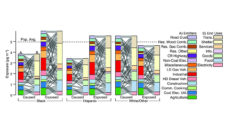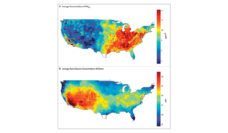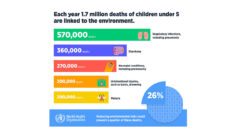As we gather with family and friends during the holiday season, many of us might think of all the food we will eat and the weight we might gain. But what about the air we’ll breathe? Should we also think about the heart disease we might be at risk of, just by cooking? Indoor air pollution is, on average, highest around the holiday season. Sealed windows are just as good at keeping air pollutants in the house as they are at keeping cold air out.
The US Environmental Protection Agency regulates air pollutants under the Clean Air Act, but this law applies to outdoor air only. Indoor air is not regulated, even though many of the same pollutants can be found at higher concentrations inside homes. These include nitrogen dioxide, particulate matter, and volatile and semi-volatile organic compounds (gases that evaporate from solids or liquids at room temperature). The health problems are the same regardless of whether you are exposed indoors or outdoors: asthma, difficulty breathing, cardiovascular disease, low birth weight, liver and kidney damage, infertility (and other reproductive health problems), and more.
Indoor air quality depends on many things, including personal activities (smoking, burning incense or candles, using air fresheners), structural components of a home (ventilation, a finished basement, type of heating system, rugs), and what your next-door neighbor is doing (using a leaf blower). Your neighbors and neighborhood can also influence indoor pollutants. According to Jonathan Levy, Professor and Chair of the Department of Environmental Health at Boston University, “Levels of indoor air pollution tend to be higher in low-income multi-family homes, given smaller homes with structural issues and often in closer proximity to outdoor sources.”
Indoor air pollution is, on average, highest around the holiday season. Sealed windows are just as good at keeping air pollutants in the house as they are at keeping cold air out.
Public health research groups and organizations are working to better understand exposure routes, health outcomes, and mitigation strategizes to improve indoor health. The Boston University and Harvard Center for Research on Environmental and Social Stressors in Housing Across the Life Course (CRESSH) works with community partners in Massachusetts to research the many pathways that influence health within a home, including air quality. “We would like to ultimately reduce health inequalities,” said Professor Madeleine Scammell, a CRESSH investigator and Community Engagement Core Leader. “Black and multiple-race children suffer the highest asthma rates compared to adults and White children in the US and experience more emergency room visits and death.”
One CRESSH Partner is Health Resources in Action (HRiA) which runs the Massachusetts Asthma Action Partnership (MAAP), that works to reduce the impact of asthma, particularly in underserved minority communities that disproportionately suffer from poor air quality. Community health workers help carry out MAAP to bring home-induced asthma under control by identifying agents that a clinician might not be aware of or be able to identify in the clinical setting. “The Community Health Workers are rock stars,” explains Stacey Chacker, Project Director of Policy and Practice at HRiA. “With their help, families are better equipped and motivated to improve their home environment which helps to bring individuals’ living in the home asthma under control.” The Home Energy Efficiency Team is a local non-profit that partners with residents and communities to improve home energy efficiency. Their efforts help reduce gas exposure in and around the home which helps to decrease asthma risk among children.
So how can you mitigate your exposure, not just for the holiday season, but year-round? According to Levy, “Everyone should, of course, cook delicious food and celebrate the holidays. If you have a fan over your stove that vents outside, you should run it while you are cooking. If not, opening windows, even briefly, can help out quite a bit, as can air purifiers. And in the long run, if you have the opportunity to replace a gas stove with electric, that can make a big difference.”
Photo by Marc Markstein on Unsplash














